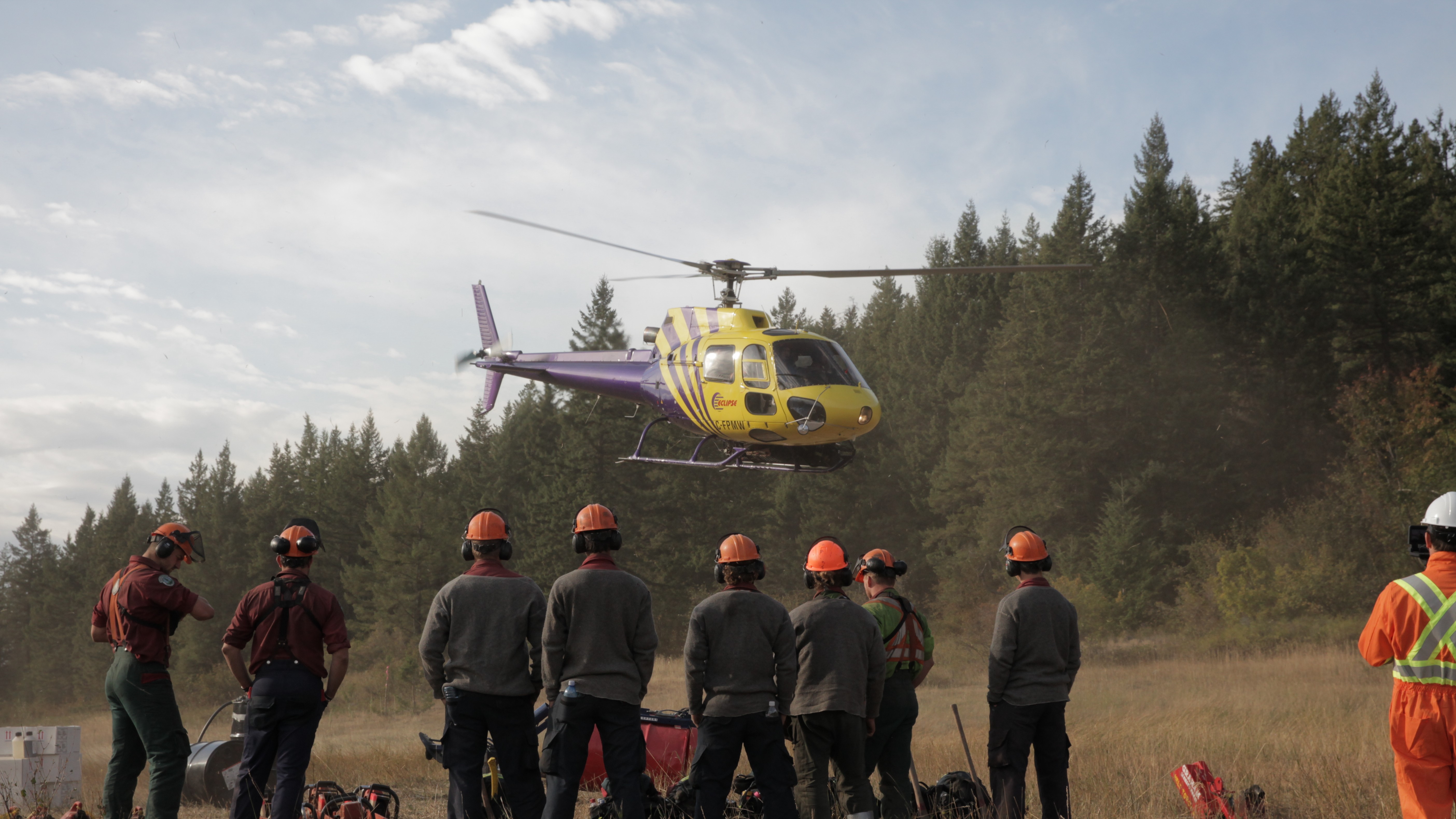As I reported, wrote, and edited this article, the Thomas fire—the third largest in the California’s modern history—burned the entire time. “We’re about to have a firefighting Christmas,” California Governor Jerry Brown said at a news conference, where he also called this hell of destructive fires something we can expect more of. He called it “the new normal.” For the more than 4,000 firefighters currently out battling wildfires, that was not welcome news—but it was realistic. That fires will be burning in another couple weeks, during the Christmas holiday, is likely. Already they’ve moved with a fury through populated and even urban areas, making for some of the most real-life-apocalypse images I’ve ever seen pop up in my Twitter feed.
Advertisement
If you’ve found it tough to keep up with the number and location of the various wildfires, you’re not alone. Since the beginning of December, six separate large wildfires have swept the southern part of the state. In October, over 250 fires in total ravaged northern California, including Napa and Sonoma wineries and rural homes there, and into the town of Santa Rosa, where neat suburban houses became piles of ash in the fire’s wake. In Ventura/Santa Barbara (Thomas fire), Los Angeles ( Skirball, Rye and Creek fires), and San Diego (Lilac fire), Santa Ana winds have been blamed for literally fanning the flames of smaller fires into conflagrations.We’re talking 50 acres burning in an hour, starting from a spark or a campfire remnant, that grows like a monster.
It’s those Santa Ana winds, (Diablo Winds in northern California) that are likely at the heart of the fires this autumn. These winds sweep down the slopes of the mountains from the interior of the continent: “They start off cold and get warmer as they accelerate,” says Cliff Mass, a professor of atmospheric sciences at the University of Washington. “They make for strong winds,” says Mass. “Virtually every major coastal wildfire event has been been associated with strong offshore winds,” writes Mass on a blogpost.Those winds may be getting stronger due to climate change, but like with all things climate, these connections are overlapping and complex. Mass argues that due to anthropogenic (human-caused) warming, the interior of the continent will heat more quickly than the Pacific Ocean, creating a lower differential between interior and coastal temperatures—actually reducing Santa Ana winds.“Calling this the ‘new normal’ —that’s not out of line at all.”
Advertisement
Check out more videos from VICE:

But winds aren’t the only force driving fires: In a new paper in the journal Nature , scientists have linked the loss of Arctic sea-ice cover with the 2012-2016 California drought. “…sea-ice changes lead to reorganization of tropical convection that in turn triggers an anticyclonic response over the North Pacific, resulting in significant drying over California,” they wrote in the abstract for the paper. Drought, along with hotter, drier weather due to climate change, is also linked with more and hotter fires.“Calling this [fire season] the ‘new normal’ —that’s not out of line at all,” says Professor Jennifer Francis, an atmospheric scientist and research professor in the Department of Marine and Coastal Sciences at Rutgers University. Professor Francis has spent her career focused on the Arctic and energy exchanges between that region and the rest of the planet. She says the warming she’s seen in the polar region has impacted weather patterns throughout the Northern Hemisphere. “Those changes up north, they’re impacting the billions of people down here.”Part of the incredible destruction of these fires is down to how much the population of California has grown in just the last 50 years. During that time, some studies have suggested that it was actually a relatively wet period, says Professor Francis. So human beings have moved en masse and quickly set up towns and cities based on what may have been an aberration in local climate, which has now returned to normal—or worse if climate change impacts push even more hot and dry air into the region.
Advertisement
If you are wondering what happened with all the rain—and even flooding—that happened last winter in California, well, that actually exacerbated the fire situation once it dried out: “Because it was so wet, there was a lot of extra growth of weeds, willdflower and shrubs, so there was a ton of extra fuel so fires were hotter and burned more quickly,” says Professor Francis. She says these “whiplash winters” are another climate-change-influenced factor that contributes to more destructive fire seasons.So, if this is the “new normal” as the governor has said, what are the solutions?It’s important to remember that fire is natural and normal, and that the ecosystems where they occur actually need them, says Professor Mass.“We’ve done something very dangerous. We’ve allowed forests and natural areas not to burn. The forests are now radically different than 150 years ago—brush and trees growing close together, creating a tinderbox. We have people who are living and moving into these areas where fire has been part of the ecosystem for thousands of years,” says Mass, and suppressing fires there has left areas vulnerable to catastrophic fires. He thinks part of the solution is more sustainable and resilient development, and letting fire do its important ecological work, via controlled burns. That, however, is an incredibly expensive proposition—”billions of dollars” says Mass, to undo the damage that years of bad planning has now wrought.Too many people living in fire-prone areas isn’t just a safety issue when it comes to saving lives and property once a fire has started. It is also because people live in these area that fires start. The Bel-Air fire was traced to homeless people cooking food, Professor Mass says, and wind-downed electrical wires are being investigated as another possible firestarter in a northern California fire. Fewer than 15 percent of fires begin naturally—via lightning strikes. According to a 2016 PNAS paper “Human-started wildfires accounted for 84% of all wildfires, tripled the length of the fire season, dominated an area seven times greater than that affected by lightning fires, and were responsible for nearly half of all area burned.”So even though wildfires are, to some extent, a natural occurrence, it is people who are causing—and suffering from—most of them. Both addressing climate change being smarter about where we live is part of the answer. “All the evidence points to the [wildfire] problem becoming worse in the future,” says Professor Francis.Make a difference in your city or town by telling your mayor that you're ready for them to commit to 100 percent renewable energy. Tell them to show their support for 100 percent clean energy now. Take action today to make an impact on tomorrow.Those winds may be getting stronger due to climate change, but like with all things climate, these connections are overlapping and complex.
